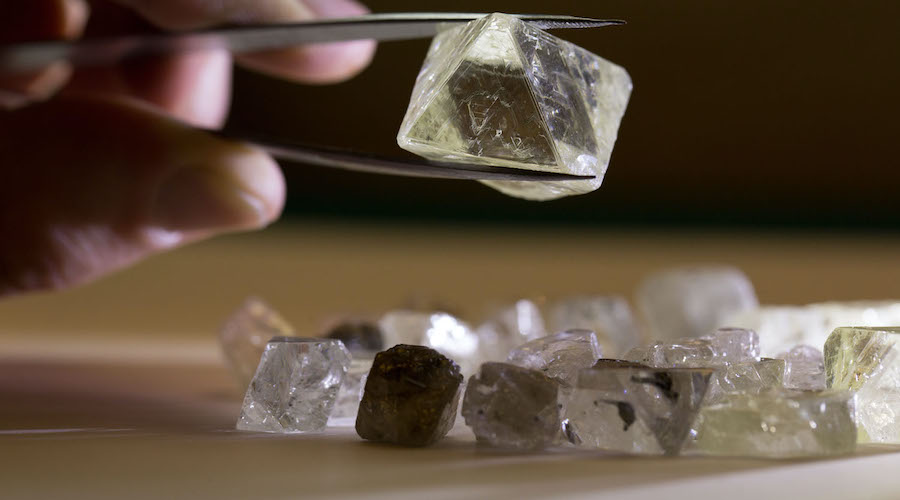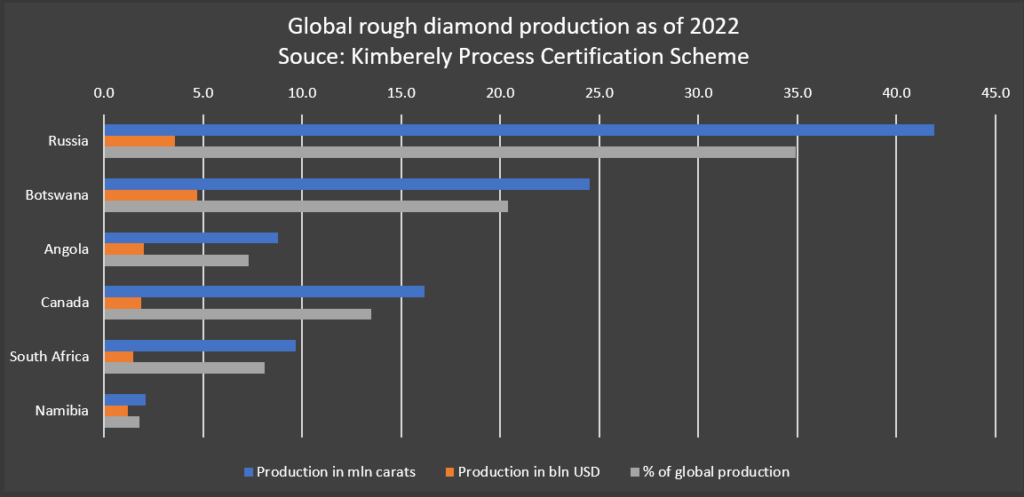
The Group of Seven (G7) countries is expected to announce an import ban on Russian diamonds in the next 2-3 weeks, Belgian officials told reporters on Friday, in a bid to tighten a squeeze on Russia’s capacity to finance the war in Ukraine.
The plan could transform the global diamond supply chain, but implementation will depend heavily on India, whose diamond industry employs millions of people who cut and polish 90% of the world’s diamonds.
The ban, proposed by Belgium where the city of Antwerp is the world’s No. 1 diamond trading hub, will come into effect on January 1, one of the government officials, who asked not to be named, told reporters in Brussels.
If it goes ahead as anticipated, it would split the global consumer diamond market. The G7, which accounts for 70% of the consumer market, would no longer accept diamonds from Russia, the world’s biggest producer of rough diamonds.
“We’re talking about restructuring a global market,” the official said, acknowledging that the system wouldn’t work perfectly right away and the G7 was still evaluating the details of Belgium’s proposed plan.
“Russia is the biggest supplier globally. With this system, we are cutting them out, leaving them in an inferior market with lower prices. We are slashing the financial flows from this sector.”
Efforts to reduce Russia’s diamond revenues and build on Washington’s sanctions on Russia’s Alrosa, the world’s largest diamond producer, have been discussed among G7 leaders since last year.
Alrosa declined to comment.
The EU bought 1.4 billion euros ($1.5 billion) worth of Russian diamonds last year, based on data from Eurostat, as the EU has not banned Russian gem imports nor blacklisted Alrosa.
Anglo American Plc’s diamond business De Beers said the diamond industry aims to support the G7 efforts.
“The question is how we can do this collectively and effectively so that all parts of the industry – large and small – are represented,” it said in an email.
Before Russia’s war with Ukraine, De Beers and Alrosa led global rough diamond sales, with De Beers accounting for 33% in value terms and Alrosa for 24%, based on a De Beers report.
As of 2021, global rough diamond sales totalled $16.4 billion, while demand for polished diamonds was $28 billion, the De Beers report showed. Demand for natural diamond jewellery stood at $87 billion, with the United States the largest consumer.

As of now, once Russian diamonds are cut and polished outside of Russia, they are considered originating from the country that “transformed” them, diamond analyst Paul Zimnisky said.
“Industry representatives have been quite actively included in this discussion and thus the government officials are being cognisant of and trying to limit the negative impact this will have on centres that are neutral to the issue like India and Africa,” he said.
Belgium does not want the extra cost to fall on consumers and jewellers, or to limit the stones that India cuts.
The EU country has suggested the customs checks be centralised in the G7’s wholesale entry points for rough and polished stones.
There will be three layers of control and blockchain systems that will generate two G7 certificates for rough and polished items and only then will they be allowed to freely circulate within the G7.
“The Indian polishers can polish whatever they want but (Russian gems) need to be segregated … At the point when the polished diamond is offered for export, the reference will be made to the original rough, again using a combination of physical inspection and traceability data,” the second Belgian official said.
India’s Gem & Jewellery Export Promotion Council declined to comment.
The system would also exempt African diamond producers. If an African seller can show the provenance is local and the output remains in line with production statistics then there is no need for a G7 certificate, the Belgian officials added.
“By cutting out Alrosa, we (Belgium) will be as a trading hub cut off from 35-40% of the market,” one of the officials said.
In the medium term, Russian gems could be sent to Asian consumers leaving non-Russian diamonds for Western markets, Zimnisky said.
“I think the G7 officials involved with this are taking it quite seriously and I believe they will strictly enforce it. But the enforcement method will be the challenging part.”
($1 = 0.9387 euros)
(By Julia Payne, Polina Devitt, Clara Denina, Shivangi Acharya and Rajendra Jadhav; Editing by Toby Chopra, David Holmes, Veronica Brown and Jane Merriman)
Comments